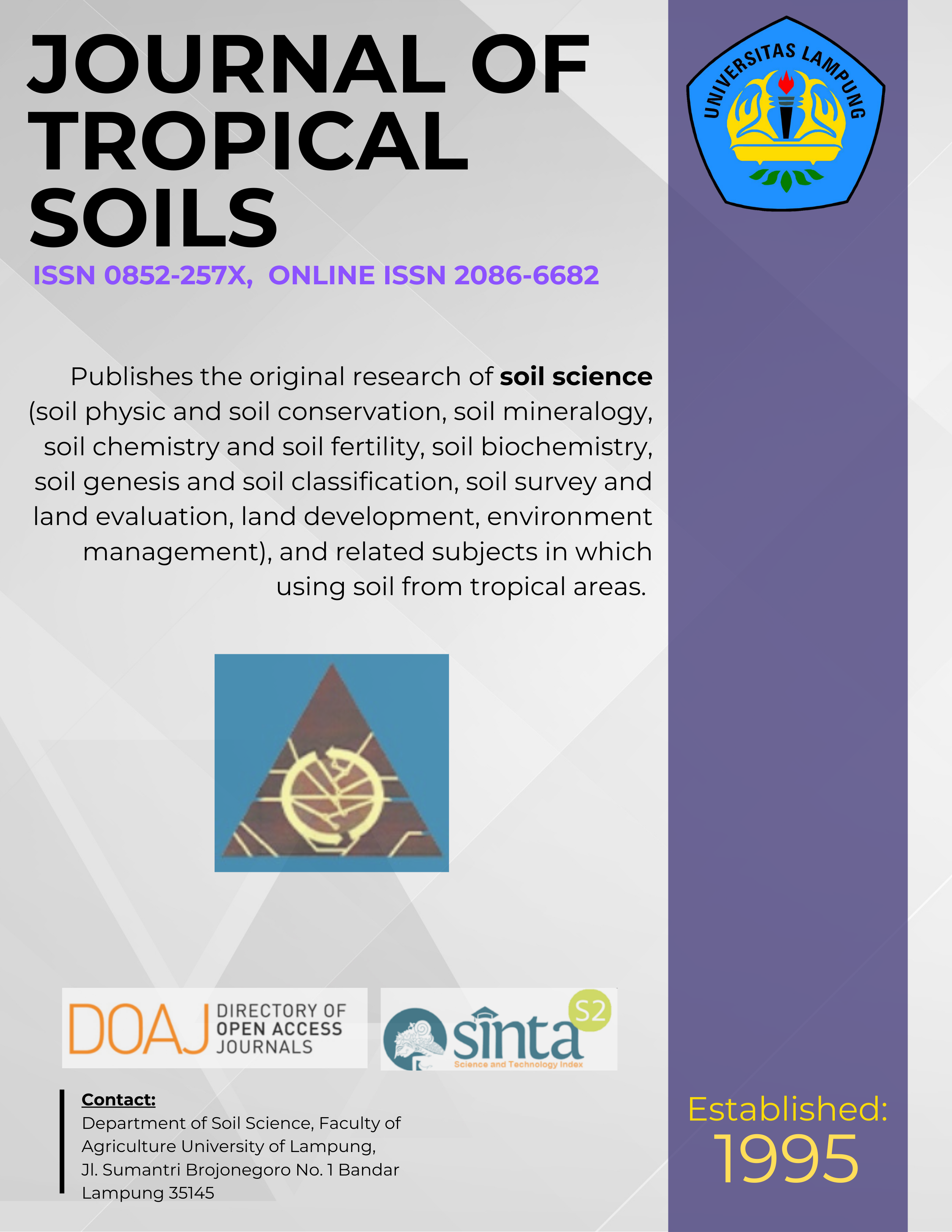Optimum Population Size of Indigenous P-solubilizing Bacteria to Correct P Availability in Acid Soils
Main Article Content
Abstract
Indonesian acid soils were used to determine an optimum population size of indigenous P-solubilizing bacteria (PSB) for solubilizating fixed P. The experiment consisted of two sub-experiments. Sub-experiment I was to isolate the indigenous PSB from Ultisols, Fresh-water lowland Inceptisols, and tidal-swamp Inceptisols. Subexpriment II was to study the capacity of the isolated PSB to correct P availability in acid soils by inoculating the isolated PSB into the tested soils at 0, 105, 1010, and 1015 cells. The population of the indigenous PSB in the tested soils increased as a result of the inoculation. Both Al-P and Fe-P content in the three tested soils decreased as compared with the initial content. The increases of available P were significantly correlated with the decreases both in Al-P (r2 = 0.68 for the Ultisols; r2 = 0.51 for the fresh-water Inceptisols; and r2 = 0.35 for the tidal-swamp Inceptisols) and in Fe-P (r2 = 0.91 for the Ultisols; r2 = 0.45 for the fresh-water lowland Inceptisols; and r2 = 0.78 for the tidal-swamp Inceptisols). The increases of available P were significantly correlated with the increases of the
population of the PSB (r2 = 0.60 for the Ultisols; r2 = 0.55 for the fresh-water lowland Inceptisols; and r2 = 0.69 for the tidal-swamp Inceptisols). The available P in the three tested soils sharply increased if the population size of the PSB was about 1 × 109 cfu g-1 of soil.
Keywords: Al-P, Fe-P, fresh-water lowland, isolated, Pikovskaya medium, tidal swamp
Downloads
Article Details
Section
License for Authors
Authors who publish with this journal agree to the following terms:
- Authors retain copyright and grant the journal right of first publication with the work simultaneously licensed under a Creative Commons Attribution License that allows others to share the work with an acknowledgement of the work's authorship and initial publication in this journal.
- Authors are able to enter into separate, additional contractual arrangements for the non-exclusive distribution of the journal's published version of the work (e.g., post it to an institutional repository or publish it in a book), with an acknowledgement of its initial publication in this journal.
- Authors are permitted and encouraged to post their work online (e.g., in institutional repositories or on their website) prior to and during the submission process, as it can lead to productive exchanges, as well as earlier and greater citation of published work (See The Effect of Open Access).
License for Regular Users
Other regular users who want to cite, distribute, remix, tweak, and build upon author’s works, even for commercial purposes, should acknowledge the work’s authorship and initial publication in this journal, licensed under a Creative Commons Attribution License.

